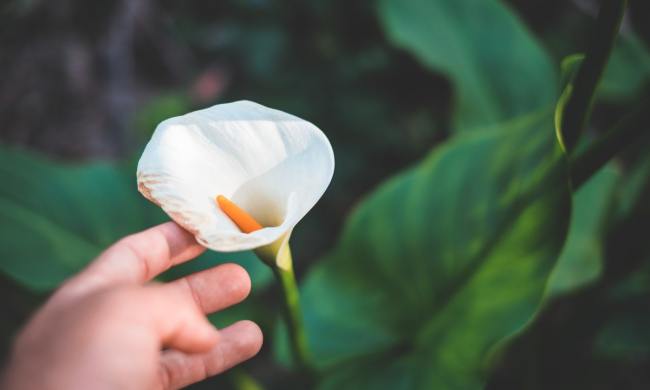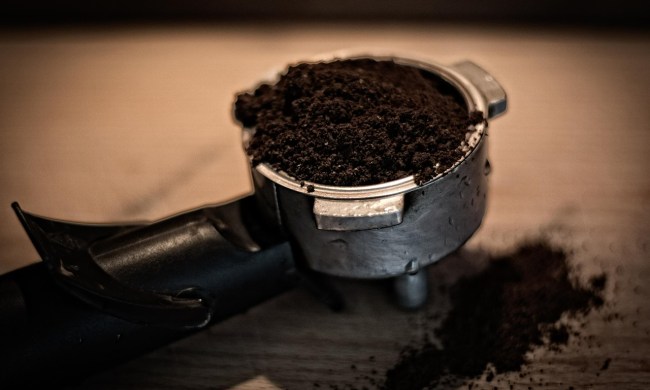Pumpkins are an incredible seasonal fruit. Whether you prefer to grow them to use in pies, as decoration, or simply because you like the way they look on the vine, there’s no denying that pumpkins are lovely and rewarding to grow. While you can get pumpkin seedlings at some nurseries, most gardeners start with pumpkin seeds. Not sure how to plant pumpkin seeds? We’ll walk you through everything you need to know.
Picking the right pumpkin variety

Before you plant your pumpkins, you need to choose the best variety for your garden. Most choices will be based on your preferences, such as color, shape, and texture. There are many fascinating pumpkin varieties, from solid white pumpkins to bumpy green ones, and of course, the many varieties of classic orange pumpkins.
Size is another key factor to consider. If you’re low on space or prefer to grow your pumpkins in a vertical garden, then a smaller pumpkin variety is ideal. Smaller pumpkins take up less room, and due to their lighter weight, they’re easier to grow on trellises.
The final thing to consider is what you plan to use the pumpkins for. While all pumpkins are useful for food or decoration, different varieties are better suited to one or the other. Larger varieties with less flesh and thicker skins are perfect for carving, while smaller, hard-shelled varieties make better whole decorations. Pie pumpkins are developed to be sweeter and softer than other pumpkins.
Choosing your planting site

Choosing your planting site carefully will save you from problems down the line. Pumpkin plants need full sun, and they also need plenty of room to grow. If you plan on growing your pumpkins on a trellis, make sure the site you choose has room for the trellis to fit and space around it, so that you can care for the pumpkin plants easily. Avoid planting your pumpkins in deep shade or near structures that might limit their growth. Keep in mind that pumpkin vines love to climb, and they will climb nearby fences or poles if they’re too close!
They need to be in well-draining soil that has a neutral pH. Otherwise, pumpkin plants are not picky about the soil type. Clay-heavy soil that drains slowly should be avoided. Sandy soil that drains more quickly is OK, but you need to water your pumpkin plants more frequently to compensate.
When to plant your pumpkin seeds

The best time to plant pumpkin seeds is typically late spring or early summer. The exact time varies depending on the variety, since slower-growing and larger varieties will take longer to mature. The average time it takes for a seed to mature is 90 to 120 days, so you should plant your pumpkins in May or June for an October harvest. Check the variety you have chosen to see the average time it takes that specific variety to mature and then use that as a guide to decide your planting time.
When it comes to the best time of day to plant your pumpkin seeds, you should plant them in the morning. This gives the water plenty of time to soak into the soil before it evaporates, and this protects both you and your seeds from the more intense sunlight in the afternoon.
Planting the seeds

Planting the seeds themselves is fairly simple. Start by forming small mounds or hills of soil where you want the pumpkin plants to grow. If you want multiple pumpkin plants, be sure to leave a few feet of space between each mound. The mounds improve drainage, as excess water will flow downhill away from the seeds. Since seeds are extra sensitive to overwatering, the hills increase the chances of your pumpkin seeds germinating and sprouting.
Next, place a few seeds in each mound. Not every pumpkin seed will sprout, even under the best circumstances, so placing a few seeds in each mound helps ensure that a pumpkin plant will grow there. However, if you plant too many seeds together, too many of them could sprout, leading to the seeds competing for resources and struggling to thrive. Three to five seeds is the ideal number. Plant the seeds roughly 1 inch deep in the top of the mound.
Storing seeds for next year

After you’ve grown one set of pumpkins, you might be interested in saving some seeds to plant next year. This is particularly easy if you’re using your pumpkins for jack-o’-lanterns or pies, since the seeds need to be removed anyway. Remove the seeds and clean any pulp or flesh off of them. Rinse the seeds with plain water, then set them aside to dry. For the most effective drying, spread them out in a single layer on a paper towel. Once they’re dry, store them in an envelope or paper bag and place the container in a dry, cool place. Avoid placing the seeds in an airtight container unless they are completely dry. Over time, water from the seeds will evaporate, which can cause condensation inside an airtight container. The condensation leads to damp seeds, which leads to mold.
Now that you know how to plant pumpkin seeds, as well as how to harvest and store your seeds for later, you’re ready to plan the pumpkin patch of your dreams! Care for your pumpkins with patience and attention, and in three to four months, you’ll be harvesting tons of pumpkins to eat or carve!




